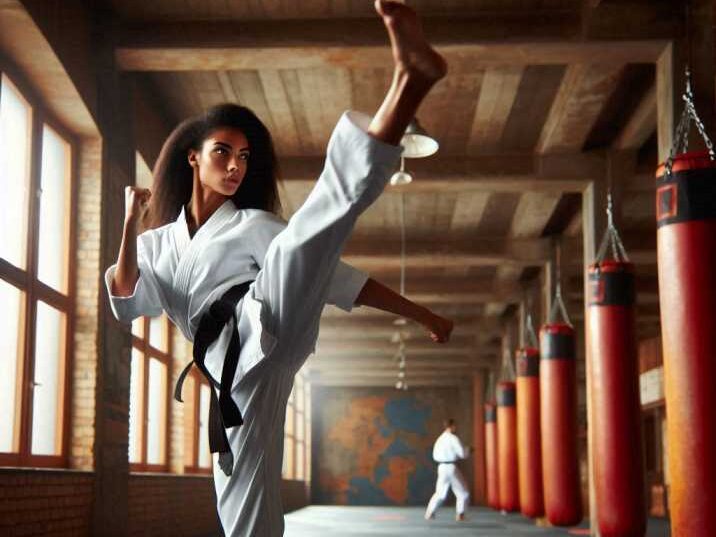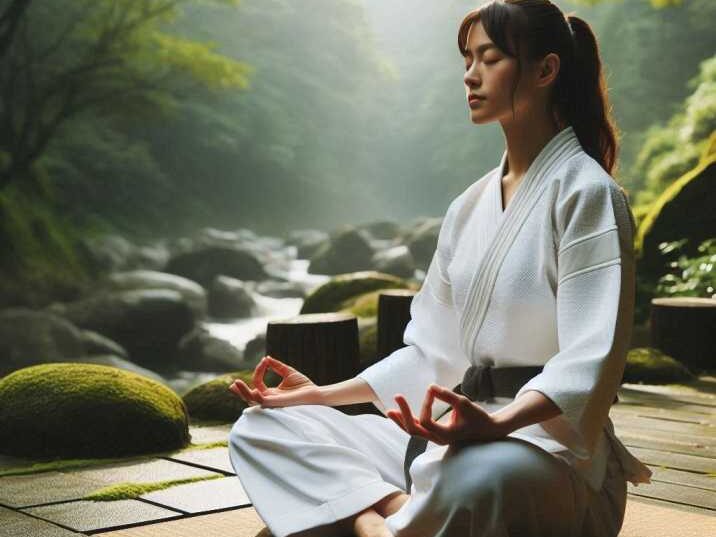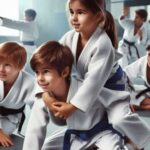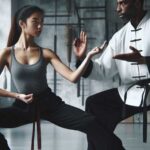Introduction
Table of Contents
Have you ever wondered what makes someone a real martial artist? It’s not just about fancy moves or fighting skills; it involves much more. Training to be a martial artist requires immense concentration and discipline, qualities that can positively impact other areas of life, such as school and hobbies. In this article, we’ll explore what it means to be a true martial artist, the training involved, and how these skills can benefit you beyond the dojo. We’ll use simple language and clear explanations, so it’s easy for anyone, including grade 5 students, to understand.

Table of Contents
- What Defines a Real Martial Artist?
- Core Characteristics
- Common Misconceptions
- Training and Discipline in Martial Arts
- Daily Training Routines
- Mental Focus and Concentration
- How Martial Arts Training Benefits Other Areas
- Improving Focus in School
- Boosting Confidence and Resilience
- Frequently Asked Questions (FAQs)
What Defines a Real Martial Artist?
To understand what makes a real martial artist, it’s essential to look beyond the surface-level skills like punching and kicking. A real martial artist is someone who not only trains physically but also embodies a set of values and characteristics that are developed through rigorous practice and dedication. Let’s explore these core characteristics and common misconceptions about martial artists.
Core Characteristics
- Discipline:
Discipline is one of the most important traits of a real martial artist. It means having the self-control to stick to a regular training routine and follow the rules of the martial art they practice. This discipline is not just about showing up to practice but also involves eating healthy, getting enough rest, and always striving to improve. A disciplined martial artist knows that success comes from consistent effort over time. - Respect:
Respect is another key characteristic that defines a real martial artist. Respect in martial arts goes beyond just bowing to your instructor or fellow students. It’s about showing kindness, understanding, and humility both in and out of the dojo. Martial artists learn to respect their teachers for their knowledge, their peers for their efforts, and themselves for their own growth and progress. This respect is also extended to opponents, as martial arts teach that everyone is on their own journey of improvement. - Focus:
Focus is essential for any martial artist. Training in martial arts requires a high level of concentration because techniques must be executed precisely. A real martial artist learns to block out distractions and stay present in the moment, whether they are learning a new move, sparring with a partner, or performing a form. This focus doesn’t just stay in the dojo; it translates into everyday life, helping martial artists pay better attention in school, at work, or during any activity. - Patience:
Martial arts is not something that is mastered overnight. It requires a great deal of patience to learn and perfect techniques, understand complex movements, and improve over time. A real martial artist knows that mastery takes time and that every step in the process, no matter how small, is valuable. They understand that persistence is key, and they don’t get discouraged by setbacks. Instead, they use them as learning opportunities.
Common Misconceptions
While the core characteristics above define what a real martial artist is, there are also several common misconceptions about martial artists that need to be clarified:
- It’s Not About Violence:
One of the biggest misconceptions about martial arts is that it’s all about fighting and aggression. In reality, martial arts is more about self-control, self-defense, and peace. Martial arts teach practitioners how to protect themselves and others but also emphasize the importance of avoiding conflict whenever possible. The focus is on self-discipline, calmness, and control, rather than aggression or violence. - Not Just Physical:
Many people think that martial arts is purely about physical strength and skills. However, being a real martial artist also involves a great deal of mental strength and emotional resilience. The practice of martial arts requires mental focus, emotional control, and the ability to stay calm under pressure. It’s not just about having strong muscles or being able to perform fancy moves; it’s also about having a strong mind and a resilient spirit.
Training and Discipline in Martial Arts
Training to be a martial artist isn’t just about showing up to class a few times a week; it’s a comprehensive approach that involves multiple types of exercises and practices, each designed to develop different aspects of a person’s physical and mental abilities. Let’s dive deeper into the daily routines and mental training that are essential for a martial artist.
Daily Training Routines
A martial artist’s daily training routine is designed to build both physical and mental strength. Here’s a breakdown of the various activities involved:
- Physical Exercises:
Physical conditioning is a fundamental part of martial arts training. This includes a variety of exercises such as stretching, strength training, and cardiovascular workouts. Stretching is important for flexibility, which helps in executing high kicks and quick movements without injury. Strength training builds the muscle power needed for powerful strikes and blocks, while cardio exercises like running or jumping rope improve stamina and endurance. These exercises ensure that a martial artist’s body is well-prepared for the demands of practice and combat. - Technical Skills:
Martial arts require precision and skill in performing specific moves and forms. These are practiced repeatedly to perfect techniques such as punches, kicks, throws, and joint locks. Forms, also known as katas or patterns, are choreographed sequences of movements that help martial artists practice their techniques in a structured manner. This practice develops muscle memory, ensuring that the correct movements become second nature, which is crucial during sparring or real-life self-defense situations. - Sparring:
Sparring is a form of practice where martial artists test their skills against a partner in a controlled setting. It allows them to apply the techniques they’ve learned in real-time scenarios, improving their timing, reflexes, and strategic thinking. Sparring teaches important lessons about distance, timing, and reading an opponent’s movements. It’s a critical part of training because it simulates real combat situations, helping martial artists develop quick decision-making skills and adaptability. - Mental Training:
Martial arts is not just a physical discipline; it also requires a strong mind. Mental training involves practices such as meditation and visualization. Meditation helps martial artists stay calm, focused, and present, reducing stress and improving concentration. Visualization is a technique where martial artists mentally rehearse their movements and techniques. By visualizing themselves performing a move perfectly, they build confidence and reinforce neural pathways, which can lead to improved performance in actual practice.
Mental Focus and Concentration
Mental focus and concentration are critical components of martial arts. Without a strong mind, even the most skilled martial artist can falter. Here’s how martial artists train their minds to enhance their performance:
- Improve Focus:
Martial artists practice mindfulness and meditation to improve their ability to stay attentive and focused during training and everyday activities. Mindfulness involves paying full attention to the present moment, which helps in maintaining concentration during long training sessions. A focused mind is less likely to make mistakes and more capable of performing complex techniques correctly. This improved focus also translates into daily life, helping martial artists stay attentive in school, work, or any other activities they engage in. - Enhance Learning:
Concentration also plays a significant role in learning and retaining new techniques and strategies. When martial artists are focused, they can better understand instructions, observe demonstrations, and remember the steps involved in performing a technique. This sharp focus leads to faster learning and mastery of new skills. Additionally, mental clarity helps martial artists analyze their own performance and identify areas for improvement, fostering continuous growth. - Increase Resilience:
Martial arts training is challenging and can be physically and mentally demanding. By practicing mental focus and concentration, martial artists build resilience — the ability to recover from setbacks and keep pushing forward. When faced with a difficult training session or a tough opponent, a resilient martial artist remains calm and composed, using their mental training to overcome challenges. This resilience is not only valuable in martial arts but also in everyday life, as it helps individuals handle stress and adversity more effectively.

How Martial Arts Training Benefits Other Areas
Martial arts training is more than just learning how to defend oneself; it has numerous benefits that extend beyond the dojo and into everyday life. The discipline, focus, and resilience developed through martial arts can greatly enhance performance in various areas, including school and personal development. Let’s explore how martial arts training can improve focus in school and boost confidence and resilience.
Improving Focus in School
One of the significant benefits of martial arts training is its ability to enhance a student’s focus and concentration. This improvement can lead to better academic performance and a more positive attitude toward learning. Here’s how:
- Pay Attention Better:
Martial arts training requires intense focus and concentration during practice. Techniques must be performed with precision, and sparring matches demand full attention to avoid mistakes. This habit of focusing sharply on the task at hand can easily transfer to the classroom. Students who practice martial arts often find it easier to concentrate on their schoolwork, follow lessons more closely, and retain information better. The same mental discipline that helps them focus on a martial arts form or technique also helps them stay attentive during a math lesson or while reading a challenging book. - Manage Time Efficiently:
Balancing martial arts training with schoolwork teaches students valuable time management skills. They learn to prioritize tasks, set schedules, and allocate time effectively for both study and practice. This skill is especially important for young students who must juggle multiple responsibilities, such as homework, projects, extracurricular activities, and family obligations. By learning to manage their time efficiently, martial arts students can reduce stress, avoid last-minute cramming, and achieve a better balance between their academic and personal lives.
Boosting Confidence and Resilience
Martial arts training also has a profound impact on a student’s self-confidence and emotional resilience. These qualities are essential for personal growth and success in various aspects of life. Here’s how martial arts contribute to building these traits:
- Increased Confidence:
Martial arts training involves setting goals, mastering new skills, and overcoming physical and mental challenges. Each achievement, whether it’s learning a new move, earning a higher belt, or successfully sparring with a tougher opponent, helps build self-confidence. As students progress, they start to believe more in their abilities and become more willing to take on new challenges, both in martial arts and in other areas of life, such as speaking up in class or trying out for a school team. The confidence gained from martial arts training encourages students to step out of their comfort zones and pursue their goals with determination. - Emotional Strength:
Martial arts training isn’t just about physical strength; it also develops emotional strength. Students learn how to handle pressure, stay calm under stress, and face setbacks without giving up. For example, during a tough sparring session, a student might get hit or struggle to land a technique, but they learn to stay composed, assess the situation, and try again. This ability to remain calm and composed in challenging situations translates into everyday life. Whether facing a difficult exam, dealing with a disagreement with friends, or navigating personal challenges, the emotional resilience developed through martial arts helps students stay strong, adapt to adversity, and find positive solutions.
Conclusion
In conclusion, being a real martial artist goes far beyond learning how to punch and kick. It involves developing a deep sense of discipline, respect, focus, and patience. Through rigorous training routines that combine physical exercises, technical skills, sparring, and mental practices like meditation, martial artists build both physical and mental strength. These skills do not just stay within the dojo; they translate into everyday life, helping students improve their focus in school, manage their time efficiently, and face life’s challenges with greater confidence and resilience.
Martial arts training cultivates valuable life skills that empower individuals to stay calm under pressure, overcome obstacles, and continually strive for improvement. Whether it’s excelling in school, enhancing personal relationships, or growing as a person, the lessons learned through martial arts help students succeed in many areas of life. By embracing the principles of martial arts, anyone can develop the qualities of a true martial artist, leading to a more focused, confident, and resilient life.
Frequently Asked Questions (FAQs)
- What does it take to be a real martial artist?
- It requires dedication, discipline, respect, and a strong focus on training.
- Can martial arts training help with school performance?
- Yes, it can improve focus, time management, and overall discipline, which benefits school performance.
- Is martial arts only about fighting?
- No, it’s also about self-control, respect, and personal growth.
- How does martial arts improve concentration?
- Through regular practice and mental training, martial artists learn to concentrate better and apply it in various aspects of life.
- What are some common misconceptions about martial arts?
- Common misconceptions include the belief that martial arts is only about violence and physical strength, rather than personal development and self-control.


